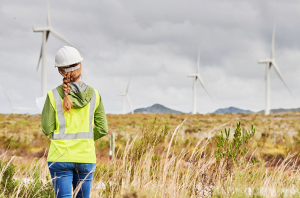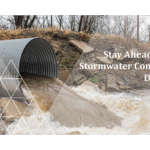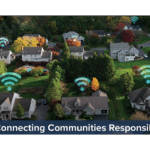
In order to thoroughly evaluate the environmental conditions of a site and assess potential risks and hazards, a Phase 2 Environmental Site Assessment (ESA) is often conducted. This article will delve into the DeSoto Phase 2 ESA, its purpose, key components, process, findings, and implications. Additionally, we will explore future directions for environmental site assessments in DeSoto, including advances in assessment techniques and policy recommendations for environmental protection.
Understanding the Purpose of Phase 2 Environmental Site Assessment
Before we delve into the specifics, it’s important to grasp the purpose of the DeSoto Phase 2 ESA. This assessment aims to provide a comprehensive analysis of the environmental conditions at a site, building upon the initial findings of the Phase 1 ESA. The Phase 2 ESA goes beyond a surface-level examination, delving deeper into potential contamination and determining the extent of any hazards present.
When it comes to environmental site assessments, the Phase 2 ESA is like peering through a magnifying glass. It allows us to uncover hidden secrets that may be lurking beneath the surface. By conducting a thorough investigation and analysis, we can gain a clearer understanding of the risks and potential impacts associated with a particular site.
Key Components of the Assessment
Several key components make up the DeSoto Phase 2 ESA. These include site investigation and sampling, laboratory analysis, and report preparation. Site investigation involves a meticulous examination of the physical aspects of the site, including soil and groundwater samples. These samples are then subjected to thorough laboratory analysis to determine if contamination is present and to what extent. Following the analysis, a comprehensive report is prepared, providing a detailed overview of the findings and recommendations for further action.
During the site investigation phase, highly trained professionals meticulously collect samples from various locations, ensuring that no stone is left unturned. These samples are carefully labeled, packaged, and transported to state-of-the-art laboratories equipped with cutting-edge technology. Here, scientists and technicians employ sophisticated analytical techniques to detect and quantify contaminants, leaving no room for ambiguity.
Importance of Phase 2 Assessment in Environmental Studies
The Phase 2 ESA holds great significance in environmental studies due to its ability to identify potential risks and hazards. By determining the nature and extent of contamination, the assessment facilitates the development of tailored remediation plans. Moreover, it aids in assessing potential impacts on human health and the local ecosystem, enabling effective management and mitigation strategies to be implemented.
Imagine a puzzle where each piece represents a different aspect of the environment. The Phase 2 ESA helps us fit those pieces together, revealing the bigger picture and allowing us to make informed decisions. It serves as a crucial tool in the arsenal of environmental professionals, empowering them to protect both human health and the natural world.
The Process of DeSoto Phase 2 Environmental Site Assessment
Now that we understand the purpose of the DeSoto Phase 2 ESA, let’s examine the step-by-step process involved in conducting this assessment.
Initial Site Inspection and Data Collection
The first stage of the process involves an initial site inspection and data collection, which includes historical research and interviews with key stakeholders. This step provides valuable context and helps identify potential contamination sources and pathways. Additionally, site reconnaissance and the collection of relevant samples take place during this phase.
Laboratory Analysis and Report Preparation
Once the samples have been collected, they are sent to accredited laboratories for analysis. The laboratory analysis plays a crucial role in determining the presence, type, and extent of contaminants within the soil and groundwater. Using this data, a comprehensive report is prepared, documenting the findings, potential risks, and recommendations for further action.
Findings from the DeSoto Phase 2 Environmental Site Assessment
The comprehensive analysis conducted during the DeSoto Phase 2 ESA yields valuable insights into the environmental conditions of the site. This section will explore the two primary aspects considered in the assessment: soil and groundwater contamination levels, as well as potential environmental risks and hazards.
Soil and Groundwater Contamination Levels
Through rigorous laboratory analysis, the DeSoto Phase 2 ESA determines the levels of contamination present in the soil and groundwater. This information provides crucial data for assessing the potential spread of contaminants and the associated risks to human health and the environment.
Potential Environmental Risks and Hazards
By identifying and evaluating potential environmental risks and hazards present within the study area, the Phase 2 ESA serves as a tool for preventive measures. It considers factors such as chemical exposure pathways, ecological habitats, and sensitive populations. This assessment enables professionals to quantify and understand the potential risks associated with the site and devise strategies to effectively manage and mitigate them.
Implications of the DeSoto Phase 2 Environmental Site Assessment
The findings and recommendations of the DeSoto Phase 2 ESA have far-reaching implications, impacting both the local ecosystem and human health. Let’s explore the key implications in detail.
Impact on Local Ecosystem
The Phase 2 ESA sheds light on the potential effects of contamination on the local ecosystem. This assessment helps identify vulnerable ecological habitats, endangered species, and areas where the contamination poses a significant threat. Armed with this information, environmental professionals can implement measures to protect and restore the ecosystem.
Recommendations for Site Remediation and Management
Based on the findings of the DeSoto Phase 2 ESA, recommendations for site remediation and management are provided. These recommendations aim to guide responsible parties in developing an effective plan to address the identified contamination and mitigate associated risks. By adhering to these recommendations, it becomes possible to restore the site to its original environmental state.
Future Directions for Environmental Site Assessments in DeSoto
As environmental standards continue to evolve and advance, so too does the field of environmental site assessments. This section will explore the future directions for such assessments in DeSoto, including advances in assessment techniques and policy recommendations for environmental protection.
Advances in Assessment Techniques
Ongoing advancements in assessment techniques are revolutionizing the field of environmental site assessments. Innovative technologies, such as remote sensing and real-time monitoring, are becoming increasingly prevalent. These advancements enhance the accuracy and efficiency of assessments, enabling professionals to identify and address environmental issues more effectively.
Policy Recommendations for Environmental Protection
The DeSoto Phase 2 ESA serves as a basis for policy recommendations in environmental protection. These recommendations are designed to improve regulatory frameworks and ensure robust measures are in place for monitoring and preventing contamination. By implementing these policies, communities can continue to thrive while safeguarding their environment from potential hazards.
In Conclusion
In conclusion, the DeSoto Phase 2 Environmental Site Assessment plays a critical role in assessing and managing potential environmental risks and hazards. Through its comprehensive process, this assessment provides valuable insights into contamination levels, potential risks, and recommendations for remediation and management. As environmental standards advance, future assessments will continue to leverage innovative technologies and policies, further ensuring the protection of DeSoto’s environment for generations to come.
If you’re ready to take the next step in ensuring the environmental integrity of your DeSoto property, ESE Partners is here to guide you. With our extensive experience in Phase 2 Environmental Site Assessments, we stand ready to identify and manage any environmental risks your site may face. Our team of experts is equipped to provide comprehensive solutions tailored to your specific needs, from due diligence to remediation and compliance. Don’t let environmental concerns stall your progress. Request A Proposal today and partner with ESE Partners, where we responsibly move business forward through environmental problem solving.








